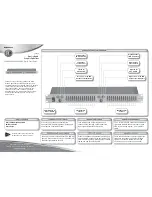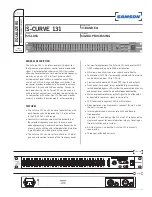
[TV + AMP] if you want to listen to the sound from the TV speaker and receiver.
[AMP] if you want to listen to the sound from the receiver only.
When you connect the receiver to a video device (projector, etc.), sound may not be output
from the receiver. In this case, set [Audio Out] to [AMP] in the [HDMI Settings] menu.
You cannot listen to the sound of a device connected to the receiver while TV input is
selected on the receiver.
Be sure to change the input of the receiver to HDMI if you want to watch a program on a
device connected via HDMI connection to the receiver.
Change the TV channel if you want to watch a TV broadcast.
Be sure to select the correct device or input when watching a program from a device
connected to the TV. Refer to the section on this operation in the operating instructions
of the TV.
Check that the selected digital audio input jack is not assigned to another input.
[249] Troubleshooting
Sound
The left and right sound is unbalanced or reversed.
Check that the speakers and device are connected correctly and securely.
Adjust the sound level parameters using [Level] in the [Speaker Settings] menu.
[250] Troubleshooting
Sound
Dolby Digital or DTS multi-channel sound is not
reproduced.
Check that the DVD, etc., you are playing is recorded in Dolby Digital or DTS format.
When connecting the DVD player, etc., to the digital input jacks of this receiver, make sure
the digital audio output setting of the connected device is available.
Set [Audio Out] to [AMP] in the [HDMI Settings] menu.
You can only enjoy High Bitrate Audio (DTS-HD Master Audio and Dolby TrueHD) and
object-based audio formats (DTS:X and Dolby Atmos) with an HDMI connection.
.
[251] Troubleshooting
Sound
The surround effect cannot be obtained.
Be sure to select the optimal sound field for the content. For details on the sound fields, see
“Selectable sound fields and their effects.”
[Dolby Surround] and [Neural:X] do not work when the speaker pattern is set to [2.0] or [2.1].
















































